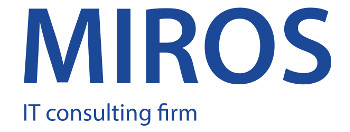They want flexibility in who they work for, where and when they work, to be able to choose their own development opportunities, define their own job description, and have workplace technology that’s effortless to use
The Edge Office Building in Amsterdam has been toted as the “smartest building in the world” and an office of the future. Employees pull up and plug in their electric cars, side-step the automated security robot on their way into the building, book a room for their next meeting with an app, and find a coffee at the machine that remembers how they like their coffee.
Coffee in hand, they are then directed to their desk for the day; no-one has their own desk and workers are encouraged to switch frequently.
While it sounds exciting and brave, and is a workplace strategy that CEB research would broadly agree with, it’s worth remembering that the main tenant, Deloitte, is happy with, “a return on investment of less than 10 years.”
Four Priorities and How IT Can Help
Managers looking for a slightly quicker return on their spending should ensure that, before they invest in any new technology to increase employees’ productivity or improve the general work experience, they understand what their teams’ priorities, values, and expectations will be.
- Employees value flexibility in where, and how they work, as well as who they work for: Employees show 15% higher intent to stay at companies where employee rewards (an employee’s overall compensation and benefits) are based on their personal needs, such as options to work remotely.
Flexibility isn’t just restricted to how employees expect to work at their employer, but who at the company they work for too.
What IT should do: Use anthropological techniques – such as observing employees at work, and conducting open-ended interviews – to find opportunities to use digital capabilities that provide employees with these kinds of flexible working arrangements.
- Employees value being able to choose their own development opportunities: There’s a 31% reduction in an employee’s probability of departure if development opportunities are mapped to the personal goals of employees.
Employees want to be able to define their own careers, and be exposed to a variety of opportunities that develop them personally.
What IT should do: Improve employees’ understanding of other functions’ work processes, especially those functions where digitization presents the greatest opportunities, by helping them choose and benefit from the best collaboration opportunities.
- Employees aren’t defined by their job description: 76% of business leaders believe their teams in 2020 will consist of people with broad skills who can work in multiple functions.
Blurring boundaries between functions and companies will mean employees manage a broader range of activities, and collaborate with a more diverse range of colleagues, vendors, customers, and investors.
What IT should do: Help employees self-define their job roles and responsibilities, rather than providing them with a list of tasks that they are responsible for.
- Employees want an effortless experience with workplace technology: Employees expect to have the same experience with technology in the workplace that they do with the consumer technologies they use at home.
The fact that 50% of employees struggle to use new technologies available to help them do their work, highlights the fact that companies aren’t doing enough to meet those heightened expectations. This challenge will only get harder with a growth in automation, which will increase technology touchpoints, without necessarily reducing employee effort.
What IT should do: Track the effort employees put forth to complete their day-to-day activities when using technology, rather than overemphasizing IT satisfaction metrics which can divert investment to technology features that don’t serve a need.

